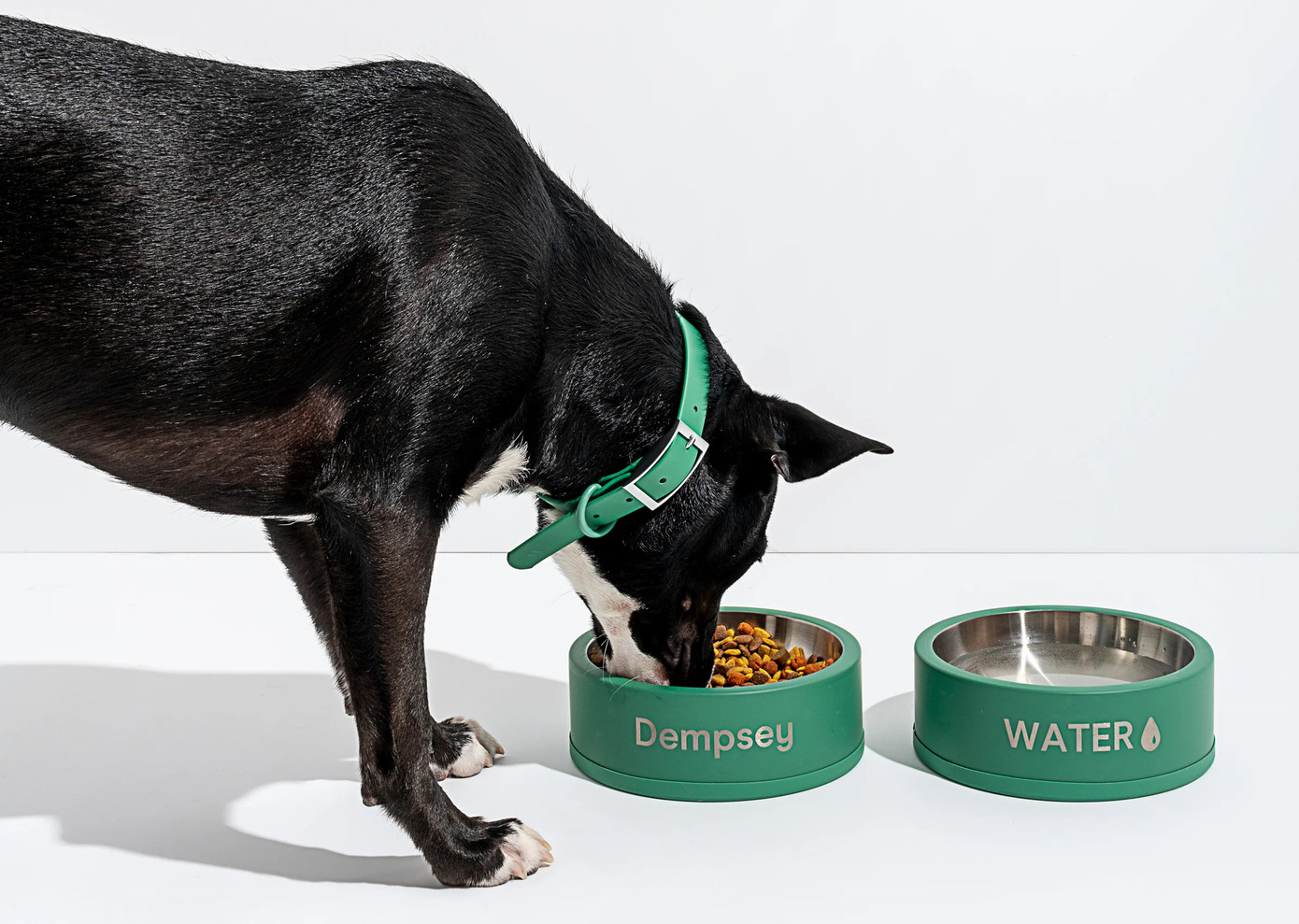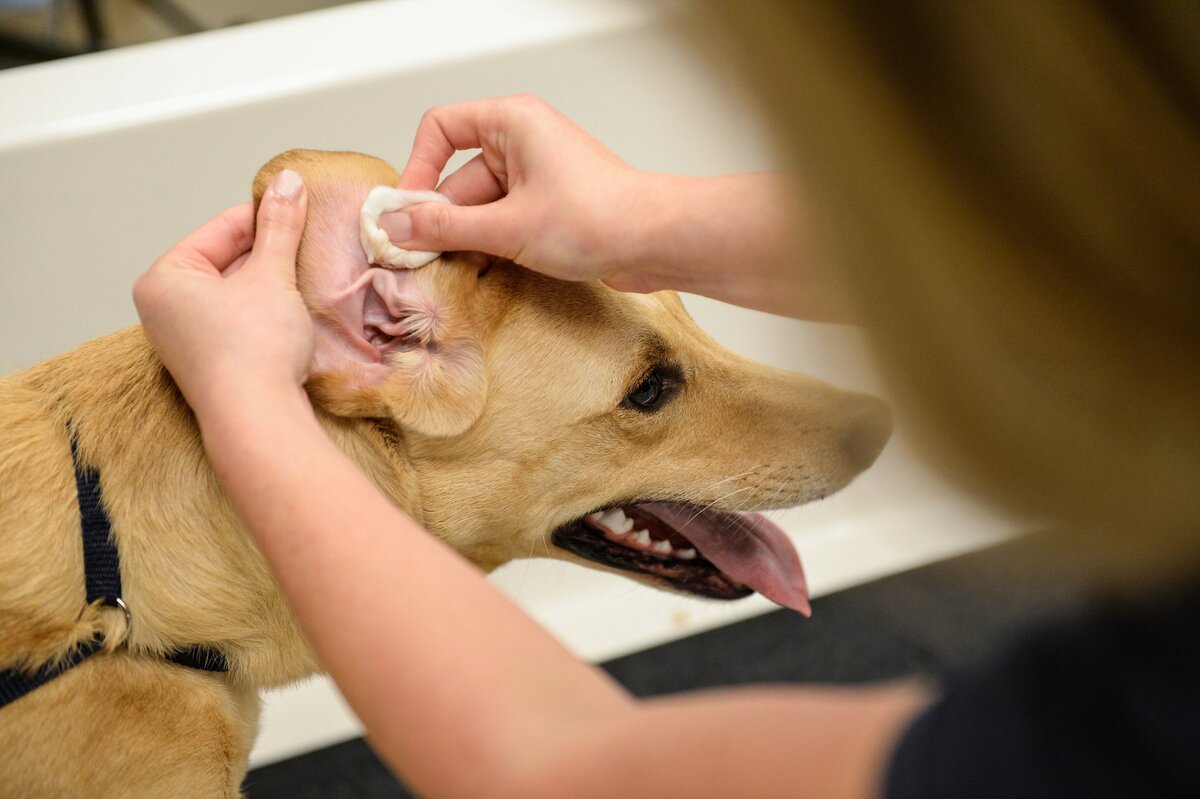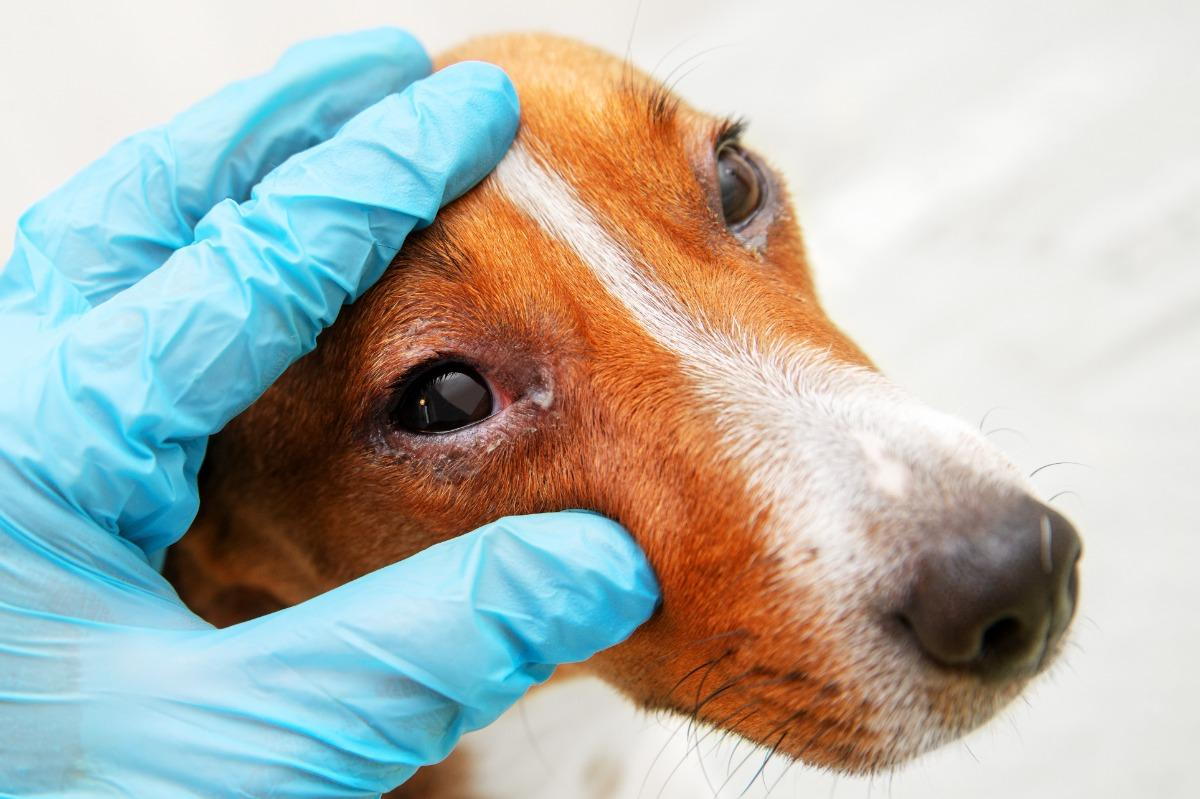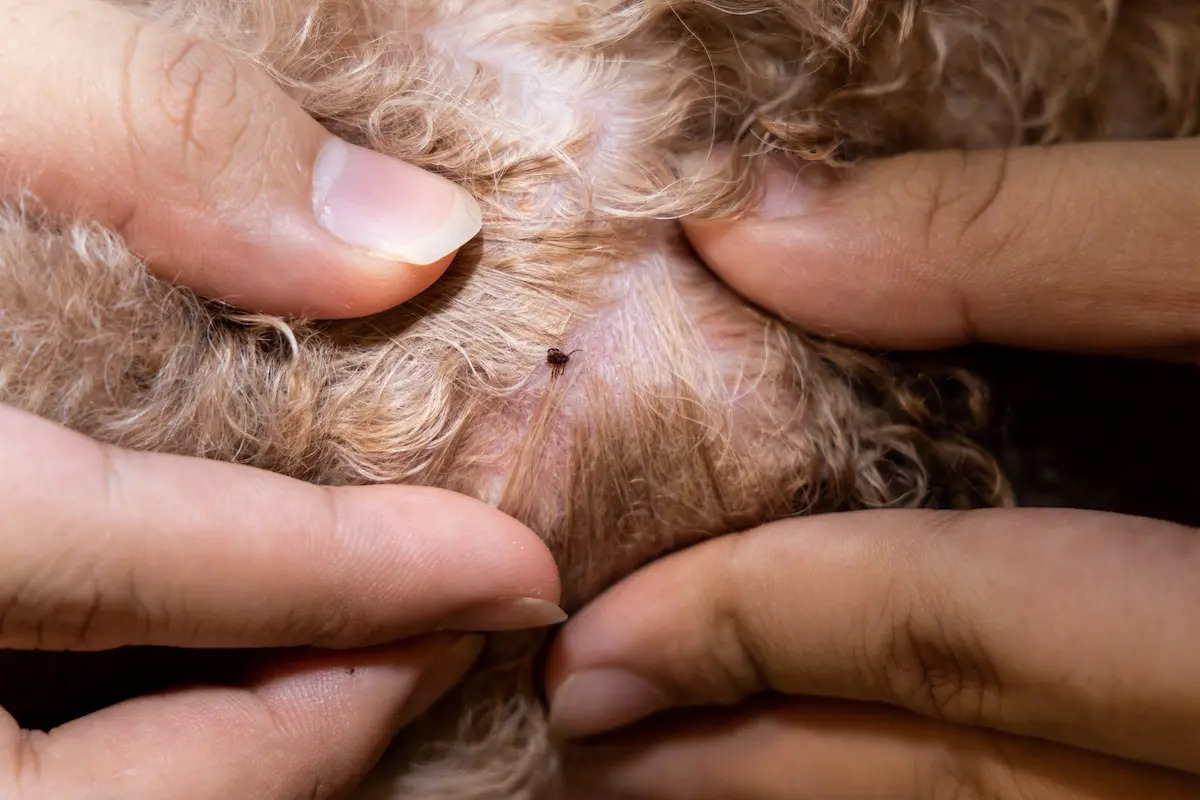Home>Health & Wellness>Common Health Issues>What Allergy Is It When Dogs Are Scratching Their Rear End


Common Health Issues
What Allergy Is It When Dogs Are Scratching Their Rear End
Published: January 30, 2024
Learn about common health issues in dogs, including allergies that cause scratching and discomfort in their rear end. Understand the symptoms and treatment options.
(Many of the links in this article redirect to a specific reviewed product. Your purchase of these products through affiliate links helps to generate commission for Pawsomeoldies.com, at no extra cost. Learn more)
Table of Contents
Introduction
When our furry friends start scratching their rear ends, it can be a cause for concern and curiosity. Just like humans, dogs can experience allergies that lead to discomfort and itching. Identifying the specific allergy causing this behavior is crucial for providing the right care and relief for our beloved pets.
Allergies in dogs are more common than one might think, and they can manifest in various ways, including itching, redness, and skin irritation. Understanding the underlying causes of these allergies is essential for addressing the issue effectively. In this article, we will delve into the common allergies that affect dogs and explore how they can lead to scratching and discomfort, particularly in the rear end area.
By gaining insights into the symptoms and triggers of allergies in dogs, pet owners can become better equipped to recognize and address these issues promptly. Additionally, we will discuss the diagnostic process and available treatment options to help alleviate the discomfort experienced by dogs suffering from allergies affecting their rear ends.
Understanding the complexities of canine allergies and their impact on our furry companions is crucial for providing them with the care and attention they deserve. Let's embark on this informative journey to unravel the mysteries behind allergies in dogs, particularly when they are scratching their rear ends.
Common Allergies in Dogs
Dogs, like humans, can suffer from a range of allergies that can cause discomfort and distress. It's important for pet owners to be aware of the common allergens that can affect their furry companions. The most prevalent allergies in dogs include:
1. Flea Allergy Dermatitis
Flea allergy dermatitis is a common allergic reaction to flea saliva. Even a single flea bite can trigger intense itching and discomfort in allergic dogs. Symptoms may include excessive scratching, hair loss, and skin irritation, particularly at the base of the tail and the rear end.
2. Food Allergies
Dogs can develop allergies to certain ingredients in their food, such as beef, chicken, dairy, wheat, and soy. Food allergies can lead to skin problems, digestive issues, and ear infections. It's important to identify and eliminate the specific allergens from the dog's diet to alleviate symptoms.
3. Environmental Allergies
Environmental allergens, including pollen, mold, dust mites, and grass, can trigger allergic reactions in dogs. These allergens can be inhaled or come into contact with the skin, leading to symptoms such as itching, redness, and skin inflammation. Environmental allergies are often seasonal and can affect the rear end and other parts of the dog's body.
Read more: What Is End-Stage Arthritis In Dogs?
4. Contact Allergies
Some dogs may develop allergic reactions upon coming into contact with certain substances, such as certain fabrics, cleaning products, or plants. Contact allergies can cause localized itching, redness, and skin irritation, particularly in areas that come into direct contact with the allergen.
5. Atopic Dermatitis
Atopic dermatitis is a chronic allergic skin disease that can be triggered by various environmental allergens. Dogs with atopic dermatitis may experience itching, redness, and recurrent skin infections, often affecting the rear end, paws, ears, and face.
Understanding these common allergies in dogs is crucial for identifying and addressing potential triggers that may be causing discomfort and itching in our furry friends. By recognizing the symptoms associated with these allergies, pet owners can take proactive measures to provide relief and improve the overall well-being of their beloved canine companions.
Symptoms of Allergies in Dogs
Allergies in dogs can manifest in a variety of symptoms, often causing discomfort and distress. Recognizing these symptoms is crucial for identifying potential allergic reactions and addressing them promptly. Common symptoms of allergies in dogs include:
-
Excessive Scratching: Dogs with allergies often exhibit persistent scratching, particularly in areas such as the rear end, base of the tail, paws, and ears. The scratching may be intense and frequent, leading to skin irritation and hair loss.
-
Skin Irritation: Allergic reactions can result in red, inflamed skin, hot spots, and rashes. The affected areas may appear irritated, and the skin may feel warm to the touch. Dogs may also develop scabs or crusts on the skin due to excessive scratching.
-
Chronic Ear Infections: Allergies can contribute to recurrent ear infections in dogs. Symptoms may include ear scratching, head shaking, foul odor from the ears, and discharge. Dogs with allergies, particularly those related to food or environmental factors, may experience persistent ear problems.
-
Hair Loss: Allergic reactions can lead to hair loss, especially in areas where the dog excessively scratches or licks. This can result in patchy hair loss and thinning of the coat, affecting the overall appearance of the dog's fur.
-
Chewing of Paws: Dogs may chew or lick their paws excessively when experiencing allergic reactions. This behavior can lead to redness, inflammation, and even the development of sores between the toes.
-
Digestive Issues: Food allergies can manifest in digestive problems such as vomiting, diarrhea, and excessive gas. Dogs may also exhibit changes in appetite and weight loss due to allergic reactions to certain food ingredients.
-
Sneezing and Watery Eyes: Environmental allergies, such as pollen or dust mite allergies, can cause dogs to exhibit symptoms similar to those experienced by humans, including sneezing, watery eyes, and nasal discharge.
Recognizing these symptoms is essential for pet owners to seek veterinary care and determine the underlying cause of their dog's discomfort. By identifying and addressing allergic reactions promptly, pet owners can help alleviate their dog's discomfort and improve their overall quality of life.
Understanding the diverse symptoms associated with allergies in dogs empowers pet owners to provide the necessary care and support for their furry companions, ensuring that they receive timely treatment and relief from allergic discomfort.
Allergies Affecting the Rear End
Allergies affecting a dog's rear end can lead to discomfort and persistent itching in this sensitive area. Several types of allergies can specifically impact the rear end, causing distress for our furry companions.
Flea allergy dermatitis is one of the primary culprits when it comes to allergies affecting the rear end of dogs. Flea bites can trigger an allergic reaction in sensitive dogs, leading to intense itching, redness, and skin irritation, particularly at the base of the tail and around the hindquarters. The presence of fleas or their saliva can cause dogs to excessively scratch and bite at their rear ends, exacerbating the discomfort and potentially leading to secondary skin infections.
In addition to flea allergy dermatitis, environmental allergies can also affect a dog's rear end. Pollen, grass, and other environmental allergens can come into contact with the dog's skin, leading to itching and irritation in the rear end area. Dogs may exhibit behaviors such as scooting or rubbing their rear ends against surfaces in an attempt to alleviate the discomfort caused by environmental allergies.
Moreover, dogs with food allergies may experience symptoms that affect their rear ends. Food allergens can lead to skin issues, including itching and redness in the anal area. Additionally, digestive disturbances resulting from food allergies can manifest as diarrhea, which can further contribute to discomfort and irritation in the rear end region.
Atopic dermatitis, a chronic allergic skin condition, can also impact a dog's rear end. This condition is often triggered by environmental allergens and can lead to persistent itching, redness, and skin inflammation in the hindquarters and tail base.
Understanding the specific allergies that can affect a dog's rear end is crucial for identifying and addressing the underlying causes of discomfort. By recognizing the potential triggers and symptoms associated with these allergies, pet owners can take proactive measures to provide relief and improve the overall well-being of their furry companions. Seeking veterinary care and guidance is essential for diagnosing and managing allergies affecting a dog's rear end, ensuring that they receive the appropriate treatment and support to alleviate their discomfort.
By being attentive to the signs of allergies affecting the rear end and taking prompt action, pet owners can help their dogs find relief from itching and discomfort, ultimately enhancing their quality of life.
Read more: Why Dogs Scratch If There Are No Fleas
Diagnosis and Treatment
Diagnosing allergies affecting a dog's rear end involves a comprehensive approach to identify the specific allergens and develop an effective treatment plan. Veterinary professionals employ various diagnostic methods to pinpoint the underlying causes of a dog's allergic reactions and determine the most suitable course of treatment.
Diagnosis
-
Physical Examination: A thorough physical examination allows veterinarians to assess the dog's skin condition, including any redness, inflammation, or lesions in the rear end area. This examination helps in identifying potential signs of allergic reactions and ruling out other skin conditions.
-
Allergy Testing: Allergy testing, including intradermal skin testing or blood tests, can be conducted to identify specific allergens triggering the dog's allergic reactions. These tests help in determining the precise substances to which the dog is allergic, guiding the development of a targeted treatment plan.
-
Elimination Diet Trial: In cases of suspected food allergies, a strict elimination diet trial may be recommended to identify the specific food allergens causing the dog's symptoms. This involves feeding the dog a novel protein and carbohydrate source to determine if the symptoms improve, followed by a gradual reintroduction of previous foods to pinpoint the allergenic ingredients.
Treatment
-
Allergen Avoidance: Once the specific allergens are identified, efforts are made to minimize the dog's exposure to these substances. This may involve implementing flea control measures, modifying the dog's diet to exclude allergenic ingredients, and reducing exposure to environmental allergens through measures such as regular bathing and cleaning of living spaces.
-
Medication: Veterinarians may prescribe medications to alleviate the dog's allergic symptoms, including antihistamines, corticosteroids, or immune-modulating drugs. These medications help in reducing itching, inflammation, and discomfort associated with allergic reactions affecting the rear end.
-
Topical Treatments: Topical therapies, such as medicated shampoos, sprays, or ointments, can be utilized to soothe irritated skin and alleviate itching in the rear end area. These treatments help in managing skin inflammation and promoting healing of affected areas.
-
Immunotherapy: For dogs with severe or recurrent allergies, immunotherapy, also known as allergy shots, may be recommended. This involves administering gradually increasing doses of the identified allergens to desensitize the dog's immune system and reduce the severity of allergic reactions over time.
-
Nutritional Supplements: In cases of food allergies, veterinarians may recommend specific nutritional supplements to support the dog's skin health and overall well-being. Omega-3 fatty acids and other supplements can help in managing skin inflammation and improving the skin barrier function.
By implementing a tailored treatment plan based on the specific diagnosis, pet owners can effectively manage allergies affecting their dog's rear end and provide them with the necessary relief and support. Regular follow-up visits with the veterinarian are essential to monitor the dog's progress and make any necessary adjustments to the treatment plan, ensuring that they receive comprehensive care to address their allergic symptoms.
Understanding the diagnostic and treatment options available for allergies affecting a dog's rear end empowers pet owners to take proactive steps in managing their dog's allergic reactions and promoting their overall comfort and well-being. With the guidance of veterinary professionals and a commitment to providing attentive care, pet owners can help their furry companions lead happy, itch-free lives despite allergic challenges.
Conclusion
In conclusion, understanding and addressing allergies affecting a dog's rear end is essential for ensuring the well-being and comfort of our beloved canine companions. By recognizing the common allergens that can trigger allergic reactions in dogs, including flea allergy dermatitis, food allergies, environmental allergens, and atopic dermatitis, pet owners can take proactive measures to minimize their dog's exposure to these triggers and provide the necessary support.
The diverse symptoms associated with allergies in dogs, such as excessive scratching, skin irritation, chronic ear infections, and digestive issues, highlight the importance of prompt recognition and intervention. By being attentive to these symptoms and seeking veterinary care, pet owners can help alleviate their dog's discomfort and improve their overall quality of life.
Diagnosing allergies affecting a dog's rear end involves a comprehensive approach, including physical examinations, allergy testing, and elimination diet trials. Through these diagnostic methods, veterinarians can pinpoint the specific allergens triggering the dog's allergic reactions and develop targeted treatment plans to address the underlying causes effectively.
Treatment options, including allergen avoidance, medication, topical treatments, immunotherapy, and nutritional supplements, offer valuable avenues for managing allergic symptoms and promoting the skin health of dogs affected by allergies in their rear end areas. With the guidance of veterinary professionals and a commitment to providing attentive care, pet owners can help their furry companions find relief from itching and discomfort, ultimately enhancing their quality of life.
By gaining insights into the complexities of allergies affecting a dog's rear end and the available diagnostic and treatment options, pet owners can become better equipped to address these challenges and provide their dogs with the care and support they need. Through ongoing vigilance, proactive management, and a deep understanding of their dog's unique needs, pet owners can help their furry companions lead happy, healthy lives, free from the discomfort of allergic reactions affecting their rear ends.













